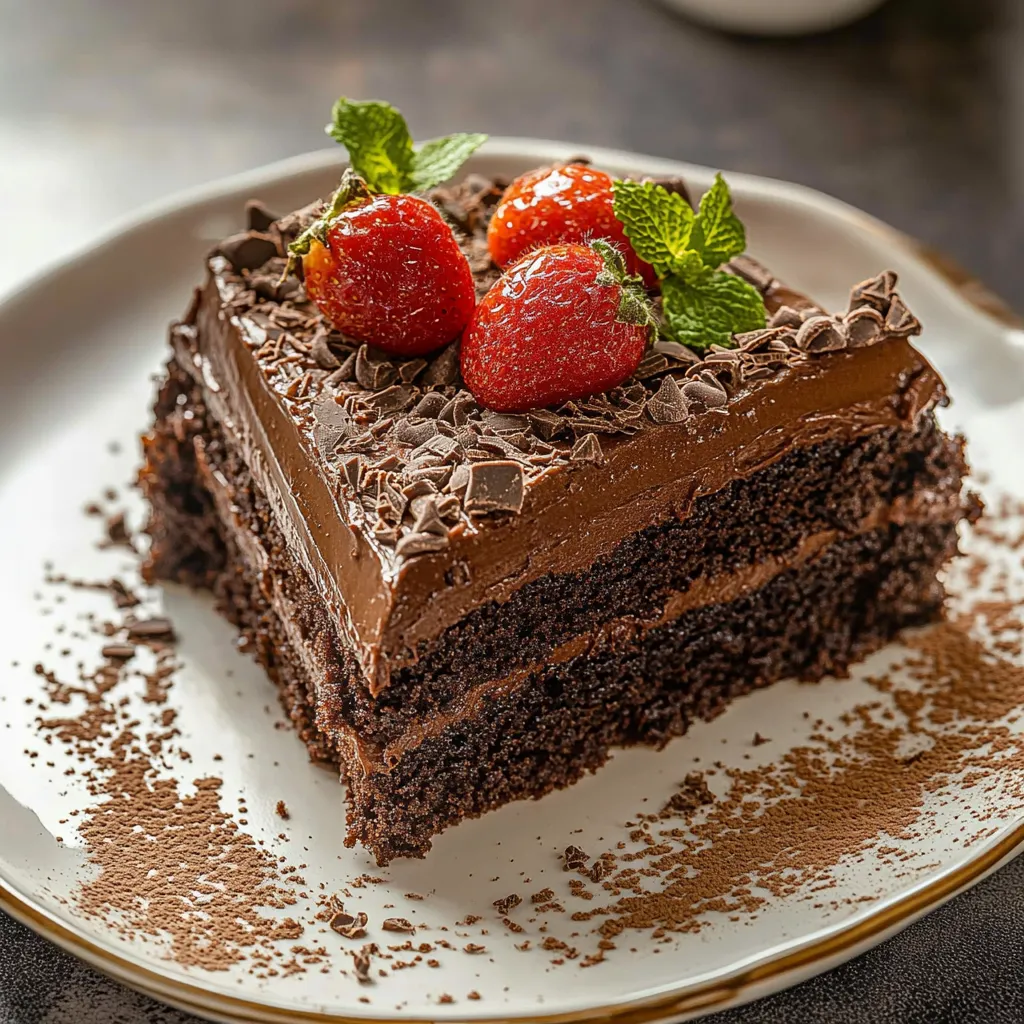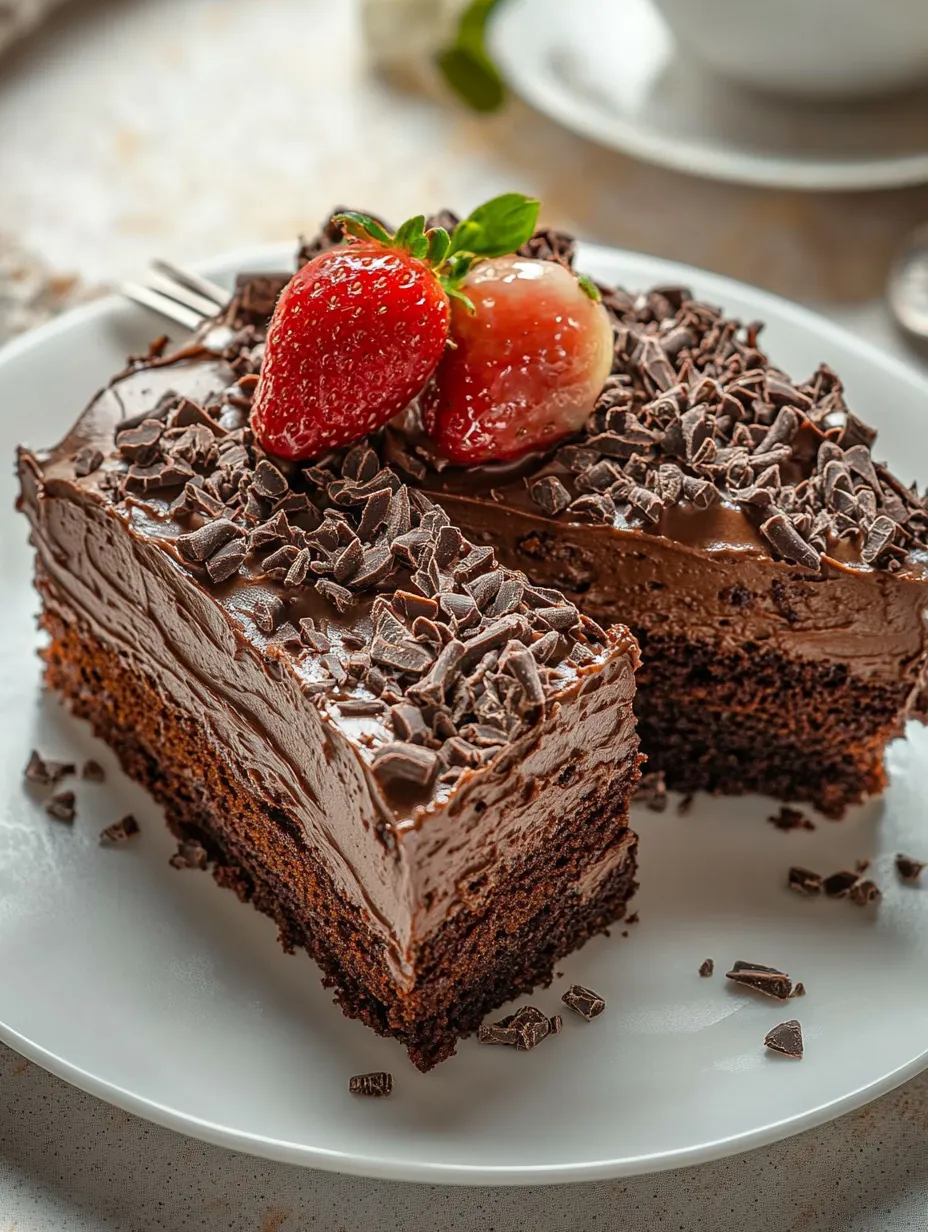 Save This
Save This
This keto-friendly Chocolate Mousse Cake tackles intense chocolate cravings without loading up on carbs. It's velvety, indulgent and downright luxurious, plus it happens to be free from gluten, grains, and sugar while supporting a keto lifestyle - though you'd never know it from just one bite.
I've always been the family's go-to dessert maker, whipping up something unique for celebrations and holidays. When I started cutting down on sugar a while back, I wasn't ready to ditch my favorite tradition. This cake came from pure necessity during my sister's birthday party - she wanted something chocolatey, I needed something low-carb. Everyone in the family wolfed it down, with my sugar-obsessed nephew asking for another piece without knowing it wasn't a "normal" cake. That moment made me so proud as a baker!
Premium Components
- Almond flour: The extra-fine type gives you that perfect cake texture. Don't use the rough stuff or you'll end up with something gritty and unsatisfying.
- Coconut flour: Makes everything lighter while keeping carbs down. You don't need much - it sucks up moisture like nothing else.
- Sugar free chocolate: The dark variety brings that rich flavor and beautiful deep color to this cake. I like using Lily's but any sugar-free brand will do the job.
- Monk fruit sweetener: You'll need both the powdered and granular kinds for different parts. It brings just the right sweetness without any funny aftertaste.
- Heavy cream: This creates that cloud-like frosting that makes everyone love this cake. The fat percentage really matters - don't try to swap in something lighter.
 Save This
Save This
I found monk fruit sweetener after trying tons of sugar substitutes that just didn't work out. Some felt weird and cool in my mouth, others tasted bitter afterward. During a family dinner, my husband's aunt who's been making keto treats for ages suggested monk fruit. It totally changed my sugar-free baking game - no odd flavors, just clean sweetness that works like regular sugar in my recipes.
Cooking Technique
- Egg preparation
- Get your eggs to room temp and beat them well in a big bowl. Cold eggs won't mix properly with everything else. I usually pull mine out about half an hour before I start baking.
- Sweetener incorporation
- Put the monk fruit granules, vanilla, apple cider vinegar and baking powder in with your beaten eggs. The vinegar works with the baking powder to help your cake rise better. Don't skip this vinegar step even if it sounds weird!
- Butter blending
- Your butter needs to be truly soft, not just slightly warmed up. When you press it, it should give easily but still keep its shape. Mix it completely with your wet stuff until it's smooth without any butter chunks showing.
- Chocolate melting
- Go slow when melting your chocolate - either quick microwave bursts or over a pot of water. If you overheat it, it'll get gritty and gross. Let it cool a bit before adding it to your mix so it won't cook the eggs.
- Flour folding
- Mix your almond and coconut flours together first before adding them to your wet mix. Add the flours bit by bit, folding gently instead of mixing hard. This keeps your cake soft instead of tough.
- Mousse frosting creation
- Make sure your cake is totally cool before frosting. I've messed up plenty of cakes by rushing this part. The warmth will melt your frosting and ruin that thick, mousse-like topping that makes everyone love this cake.
My mother-in-law follows keto for her health but always felt left out during family parties. The first time I made her this cake for her birthday, she started tearing up halfway through eating it. She hadn't enjoyed a proper birthday cake in three years and couldn't believe something that worked with her diet could taste so amazing. Now she asks for this cake every year, and lots of other family members want the recipe too.
Beautiful Serving Ideas
This cake looks amazing on a plain white stand with chocolate shavings sprinkled on top. When I have friends over for dinner, I serve single slices with some whipped cream and half a fresh strawberry. The bright red berry looks gorgeous against the dark chocolate. During Christmas, I've put sugar-free peppermint flavor in the frosting and topped it with little pieces of candy cane for a festive touch that was gone in minutes at our neighborhood get-together.
Taste Alternatives
While I love the classic dark chocolate version most, I've tried lots of different twists. Adding some espresso powder to both the cake and frosting makes an awesome mocha cake. Mixing chopped hazelnuts into the batter gives it a Nutella flavor my kids can't get enough of. For my husband's birthday, I added orange zest to the cake and a tiny bit of orange oil to the frosting - the chocolate-orange mix was incredible. You can really play around with this basic recipe.
Keeping It Fresh
This cake stays good in the fridge for up to a week, though we usually finish it long before that at our house. The frosting gets firmer when cold, creating an almost truffle-like bite that some family members actually prefer. If you want to make it ahead, you can freeze the unfrosted cake layers wrapped tight in plastic for up to three months. The frosting doesn't freeze well by itself but works fine once it's on the cake. I've frozen finished cake slices for those moments when I desperately need chocolate, and they thaw perfectly.
 Save This
Save This
I've baked this chocolate mousse cake countless times in the last three years - for birthdays, holidays, dinner parties and sometimes just because it's Tuesday and we need some chocolate in our lives. What started as a dietary requirement has turned into our family's go-to dessert. There's something really satisfying about making something so incredibly tasty that's actually healthier too. When guests ask me for the recipe and look shocked when I tell them it's sugar-free and low-carb, I think that's the best compliment any baker could hope for.
Commonly Asked Questions
- → Can I substitute the monk fruit sweetener with something else?
- Definitely! Try erythritol, allulose, or stevia instead of monk fruit. For erythritol and allulose, use matching amounts. With stevia, you'll need way less because it's tons sweeter - look at your brand's conversion guide. If you don't care about keeping it sugar-free or keto, regular sugar works too.
- → Why does the recipe call for apple cider vinegar?
- The apple cider vinegar kicks the baking powder into action, helping low-carb bakes rise better since they lack gluten. It also rounds out the taste, and don't worry - you won't notice it in your finished cake. In a pinch, white vinegar or fresh lemon juice will do the trick.
- → Can I make this cake dairy-free?
- You can swap butter for coconut oil in the cake part, though it might feel a bit different when you eat it. For the mousse, try full-fat coconut cream instead of heavy whipping cream, but expect a coconut flavor twist. Let the coconut cream sit in the fridge overnight and just use the firm part for whipping up.
- → How do I know when the cake is done baking?
- Stick a toothpick in the middle - if it comes out clean or with just a few dry bits, your cake's ready. Almond flour cakes can fool you - they might look done outside but still be wet inside. If the top gets too brown too fast, just cover it with foil for the final 10-15 minutes of baking time.
- → Can I make this cake in advance?
- You bet! The cake layer can be made 1-2 days ahead and kept covered at room temp. It's best to make the mousse right before you plan to serve, though the whole finished cake stays good in the fridge for up to 4 days. For the best look and taste, add any fancy toppings just before you bring it to the table.
